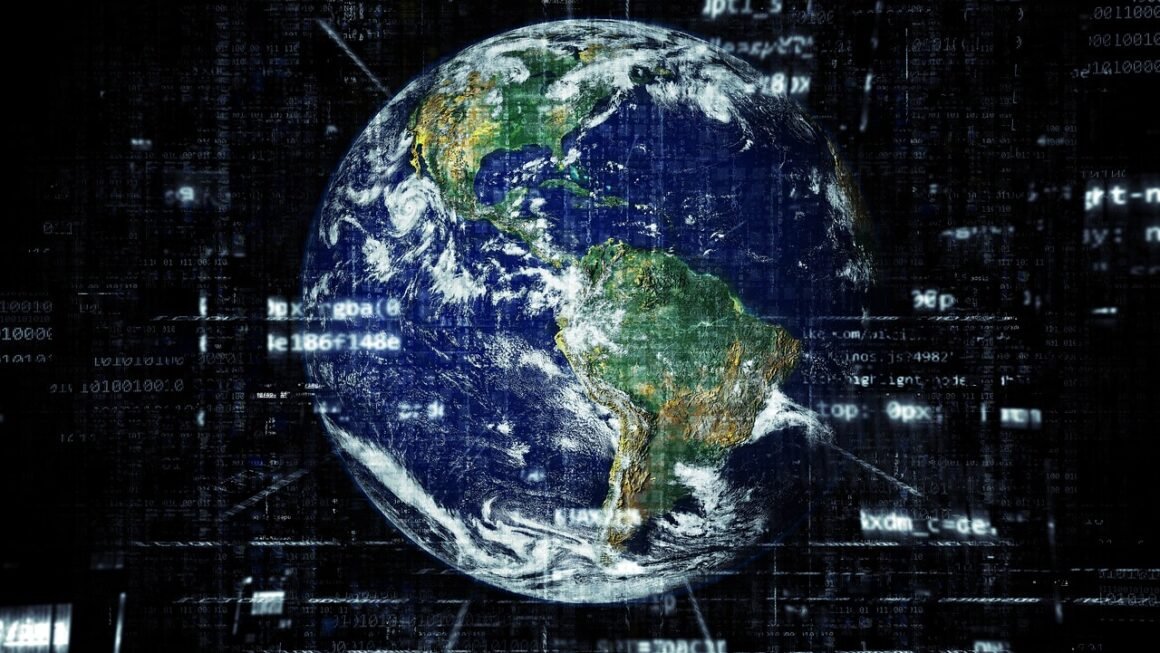Imagine a world where your refrigerator orders groceries when you’re running low, your thermostat adjusts automatically based on your location, and your doctor remotely monitors your vital signs. This isn’t science fiction; it’s the reality being shaped by the Internet of Things (IoT), a transformative technology connecting everyday objects to the internet, enabling them to collect and exchange data. In this comprehensive guide, we’ll delve into the world of IoT, exploring its components, applications, benefits, and challenges.
Understanding the Internet of Things (IoT)
What is IoT?
The Internet of Things (IoT) refers to the network of physical objects—”things”—that are embedded with sensors, software, and other technologies for the purpose of connecting and exchanging data with other devices and systems over the internet. These devices range from ordinary household objects to sophisticated industrial tools. At its core, IoT aims to make everyday objects smarter and more responsive by giving them the ability to communicate and interact with their environment.
- Key components of an IoT system:
Devices: The physical objects equipped with sensors and actuators.
Connectivity: The network infrastructure that allows devices to communicate (e.g., Wi-Fi, Bluetooth, cellular).
Data Processing: The analysis of data collected by devices, often performed in the cloud.
User Interface: The platform through which users interact with the IoT system (e.g., mobile app, web dashboard).
How Does IoT Work?
IoT systems function through a process of data collection, transmission, and analysis. Sensors embedded in devices collect data about their environment or usage. This data is then transmitted wirelessly to a central hub or cloud platform. Once the data is in the cloud, sophisticated software analyzes it to extract valuable insights. These insights can be used to automate tasks, improve efficiency, and provide personalized experiences.
- Example: A smart thermostat uses sensors to detect the temperature and occupancy of a room. This data is transmitted to a cloud server, which analyzes it to determine the optimal temperature settings. The server then sends instructions back to the thermostat to adjust the temperature accordingly.
Applications of IoT Across Industries
IoT has a vast array of applications across various industries, transforming how businesses operate and consumers live.
Smart Homes
Smart homes leverage IoT to automate and control various aspects of home living, enhancing convenience, comfort, and energy efficiency.
- Examples:
Smart lighting systems that adjust brightness based on ambient light.
Smart thermostats that learn your temperature preferences.
Smart security systems that provide real-time monitoring and alerts.
Voice-controlled assistants that manage connected devices.
Healthcare
IoT is revolutionizing healthcare by enabling remote patient monitoring, improving diagnostic accuracy, and optimizing hospital operations.
- Examples:
Wearable devices that track vital signs like heart rate and blood pressure.
Remote patient monitoring systems that allow doctors to monitor patients from afar.
Smart medication dispensers that ensure patients take the right medication at the right time.
Asset tracking systems that help hospitals manage equipment and supplies.
Manufacturing
In manufacturing, IoT enables predictive maintenance, improves process optimization, and enhances supply chain visibility.
- Examples:
Sensors that monitor the performance of machinery to predict potential failures.
Real-time tracking of inventory and assets across the supply chain.
Automated quality control systems that detect defects early in the production process.
Smart factories that optimize production processes through data analysis.
Agriculture
IoT is transforming agriculture by enabling precision farming, optimizing resource utilization, and improving crop yields.
- Examples:
Sensors that monitor soil conditions, weather patterns, and crop health.
Automated irrigation systems that deliver water only when and where it’s needed.
Drones that capture aerial images of fields to identify areas that need attention.
Livestock monitoring systems that track animal health and behavior.
Benefits of Implementing IoT Solutions
Implementing IoT solutions offers numerous benefits to individuals, businesses, and society as a whole.
- Improved Efficiency: Automate processes, optimize resource utilization, and reduce waste.
- Enhanced Productivity: Streamline operations, improve decision-making, and boost employee productivity.
- Cost Savings: Reduce energy consumption, minimize downtime, and optimize supply chain management.
- Better Customer Experiences: Personalize products and services, improve customer service, and enhance customer engagement.
- New Revenue Streams: Develop innovative products and services, create new business models, and tap into new markets.
- Data-Driven Insights: Collect and analyze data to gain valuable insights into customer behavior, market trends, and operational performance.
Challenges and Considerations
While IoT offers tremendous potential, it also presents several challenges that need to be addressed.
Security
IoT devices are often vulnerable to cyberattacks due to their limited processing power and security features. Protecting IoT devices and data from unauthorized access is critical.
- Recommendations:
Implement strong authentication and encryption protocols.
Regularly update device software and firmware.
Segment IoT networks to isolate vulnerable devices.
Conduct regular security audits and vulnerability assessments.
Privacy
IoT devices collect vast amounts of personal data, raising concerns about privacy and data security. Ensuring compliance with privacy regulations and protecting user data is essential.
- Recommendations:
Implement data minimization principles.
Obtain user consent for data collection and usage.
Provide users with transparency and control over their data.
Comply with relevant privacy regulations, such as GDPR and CCPA.
Interoperability
The lack of standardized protocols and interfaces can make it difficult to integrate IoT devices from different vendors. Ensuring interoperability is crucial for seamless data exchange and system integration.
- Recommendations:
Adopt open standards and protocols.
Develop APIs and SDKs to facilitate device integration.
Participate in industry initiatives to promote interoperability.
Choose devices that support standard protocols.
Scalability
As the number of IoT devices continues to grow, scalability becomes a major challenge. Designing IoT systems that can handle large volumes of data and traffic is critical.
- Recommendations:
Use cloud-based platforms that can scale on demand.
Implement efficient data storage and processing techniques.
Design networks that can support high bandwidth and low latency.
Optimize device communication protocols for scalability.
Conclusion
The Internet of Things is transforming the world around us, creating new opportunities and challenges for businesses and individuals alike. By understanding the components, applications, benefits, and challenges of IoT, you can harness its power to improve efficiency, enhance productivity, and create innovative solutions. As IoT technology continues to evolve, staying informed and adapting to new developments will be crucial for success in the connected world.



